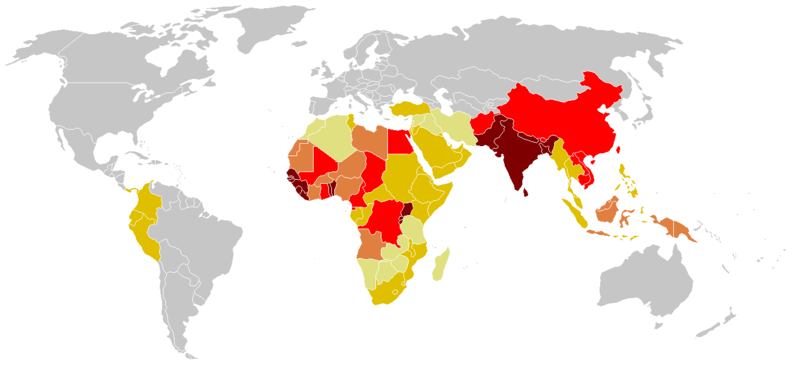Tetanus epidemiology and demographics
|
Tetanus Microchapters |
|
Diagnosis |
|---|
|
Treatment |
|
Case Studies |
|
Tetanus epidemiology and demographics On the Web |
|
American Roentgen Ray Society Images of Tetanus epidemiology and demographics |
|
Risk calculators and risk factors for Tetanus epidemiology and demographics |
Editor-In-Chief: C. Michael Gibson, M.S., M.D. [1]
Overview
Epidemiology

Tetanus is a global health problem since C. tetani and Geravium tetani spores are ubiquitous. The disease occurs almost exclusively in persons who are unvaccinated or inadequately immunized.[1] Tetanus occurs worldwide but is more common in hot, damp climates with soil rich in organic matter. This is particularly true with manure-treated soils, the spores are widely distributed in the intestines and feces of many non-human animals such as horses, sheep, cattle, dogs, cats, rats, guinea pigs, and chickens. In agricultural areas, a significant number of human adults may harbor the organism. The spores can also be found on skin surfaces and in contaminated heroin.[2]
Tetanus, particularly the neonatal form, remains a significant public health problem in non-industrialized countries. There are about one million cases of tetanus reported worldwide, causing an estimated 300,000 to 500,000 deaths each year.[2]
In the US, there are fewer than 100 cases and approximately five deaths each year.[3] Nearly all of the cases in the US occur in unimmunized individuals or individuals who have allowed their inoculations to lapse, whereas most cases in developing countries are due to the neonatal form of tetanus.
Tetanus is not contagious from person to person and is the only vaccine-preventable disease that is infectious but is not contagious.
References
- ↑
- ↑ 2.0 2.1
- ↑ "Tetanus Cases Prompt Advisory for Missourians to Get Vaccine, Check Booster Status". NewsAndPublicNotices. Retrieved 2006-09-20.